Quest Pro: all you need to know
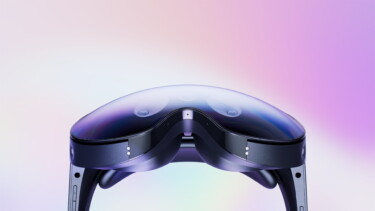
The Quest Pro is Meta's first high-end headset. You can find all important information about technology, price and availability here.
On October 28, 2021, Meta teased a premium headset during Meta Connect 2021. The codename: Project Cambria.
On October 11, 2022, just under a year later, Meta officially unveiled "Project Cambria" - product name "Quest Pro" - at Meta Connect 2022. Since the unveiling, the device has been available for pre-order. The official market launch of the mixed reality headset is October 25, 2022.
This article answers the most important questions about the premium device.
Content
What does “mixed reality” mean?
A mixed reality headset is a device that can display VR and AR, as opposed to VR-only headsets and AR-only headsets. With Meta Quest Pro, you can completely hide the physical environment and replace it with a digital environment (virtual reality). Or, display the physical environment in the headset through a digital reconstruction (called passthrough) and then add digital elements(augmented reality).
The difference between mixed reality headsets and AR headsets with transparent optics, such as Hololens 2 or Magic Leap 2, is that the latter allow natural light to pass through, while the former reconstruct the environment completely digitally using sensors built into the mixed reality headset's housing. This has advantages and disadvantages.
Is Meta Quest Pro the successor to Meta Quest 2?
No. With Meta Quest Pro, Meta is building a new product line with high-end features that will coexist with Meta Quest 2 (review) and possible successor headsets. Meta Quest Pro is backward compatible with the Meta Quest 2's app ecosystem, but offers new technology and is priced significantly higher.
Meta Quest 2 is rumored to be replaced by Meta Quest 3 (info) in late 2023, which should cost about the same.
Who and what does Meta want to reach with Meta Quest Pro?
With Quest Pro, Meta is testing new technologies on the market. As these mature on the software side and become cheaper to produce, they could find their way into Meta Quest 3 and subsequent generations of the consumer-oriented product line. The aggressively priced Meta Quest 2 is aimed at the masses and should achieve the fastest possible market penetration.
Meta Quest Pro has a different goal: The high-end product line is aimed at professional users, developers, and companies and is an experimental field for new, particularly advanced VR and AR technologies. Some early testers even said that the device feels more like a developer kit than an end product.
The focus is on productivity and virtual collaboration. Upcoming generations of Meta Quest Pro will be able to replace Chromebooks and laptops and allow users to take their office with them wherever they go. By the end of the decade, headsets of this type should become the primary work device - at least that's Meta's long-term vision.
What’s new about Meta Quest Pro?
Meta Quest Pro brings three major new features, as well as the new Meta Quest Touch Pro controllers (more on that later).
Eye and face tracking.
New sensors enable natural eye contact between avatars and real-time transmission of facial expressions into VR. This should make emotions easier to read and social interactions more realistic. This promotes social presence, the feeling of being present in the same room with other people.
The following video of a tech demo shows the eye and face tracking in action.
High-quality mixed reality
Already with Meta Quest 1 & 2, you can have the physical environment reconstructed in the VR headset via passthrough, and apps can extend it with digital objects. However, the digital image of the world is black-and-white and so grainy that hardly any details can be made out.
Meta Quest Pro takes passthrough to the next level. Thanks to a new sensor architecture, the physical environment is reproduced in color, in 3D, and in high resolution: According to Meta, the Passthrough image has four times the resolution of the Meta Quest 2. Though, some early reviewers have said that passthrough doesn't allow things like seeing a computer keyboard or reading on a mobile device.
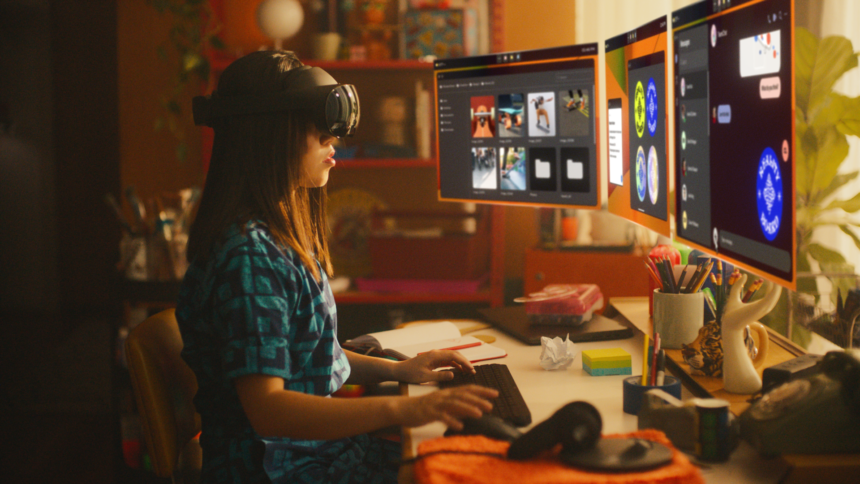
A mixed reality office with Meta Quest Pro. | Image: Meta
Pancake lenses and new form factor
Something is also happening in terms of looks. Meta Quest Pro is the first Meta headset to use pancake lenses, also a feature of the Pico 4 (review) announced a few weeks earlier.
Pancake lenses fold the path of light multiple times, allowing them to be placed closer to the display, allowing for a much narrower profile than older headsets with Fresnel optics. According to Meta, the optical stack could be reduced by 40 percent compared to Meta Quest 2.
Pancake lenses don't just bring advantages in form factor. The device also benefits in terms of clarity. Meta Quest Pro offers the best optics of all Meta headsets to date, according to Meta (more on that below).
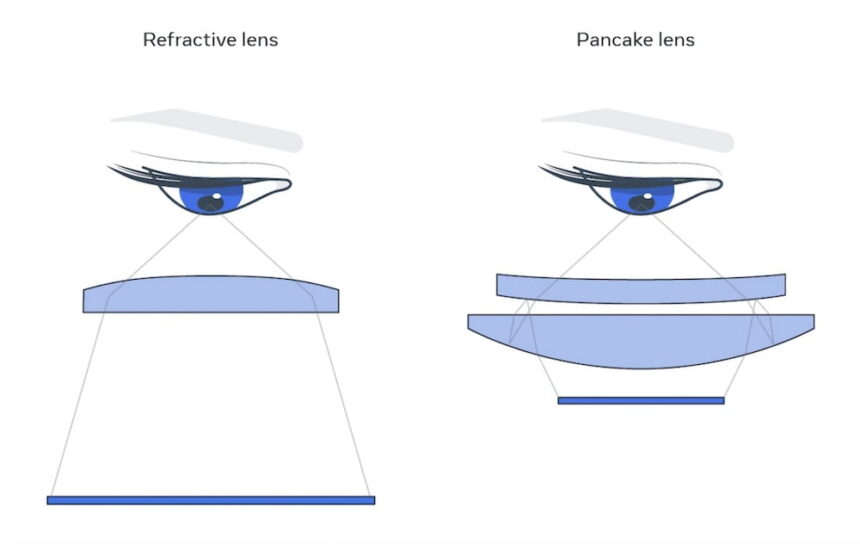
Pancake lenses reduce the required distance between the lens and the display, resulting in a narrower case. | Image: Meta
What are the specifications of Meta Quest Pro?
Meta lists the following specifications:
- Displays: 2 LCDs with local dimming backlighting
- Resolution: 1,800 by 1,920 pixels per eye
- refresh rate: 72 hertz standard, maximum 90 hertz
- Field of view: 106 degrees horizontal, 96 degrees vertical
- IPD adjustability: Automatic and continuous via eye tracking. Supported range: 55 - 77 millimeters interpupillary distance
- SoC: Qualcomm Snapdragon XR2+
- Memory: 12 GB RAM
- Storage: 256 GB
- Sensors: 10. Five sensors for 6-DoF tracking and color passthrough, three for eye tracking, two for face tracking
- Audio: Built-in speakers and microphone, 3.5mm jack on both sides
- Connectivity: Bluetooth 5.2, Wi-Fi 6E.
- Battery life: 1 - 2 hours, depending on content. With the included charging cable (2 meters), you can charge the headset while using it. On the charging station, the headset needs about two hours for a full charge.
- PC-VR: support via Link and Air Link (guide).
- Weight: 1.5 lbs
- Dimensions: 10.4 in (L) x 5 in (H) x 7.6 in (W)
Meta also makes the following comparisons with Meta Quest 2:
- Meta Quest Pro offers 37 percent more PPI (pixels per inch) and 10 percent more PPD (pixels per degree).
- Meta's local dimming technology controls more than 500 independent, individual LED blocks for 75 percent more contrast, as well as brighter colors.
- The color spectrum covered is said to be 1.3 times larger than Meta Quest 2.
- The display achieves 25 percent more sharpness in the center of the image and even a 50 percent clearer image at the periphery.
What are the new features of the Meta Quest Touch Pro controllers?
The new controllers track themselves independently using three integrated sensors. This has two advantages.
First, the controllers are spatially tracked even when they don't have visual contact with the headset sensors, such as behind a user's back. Secondly, they do not need tracking rings and can be brought closer together without getting in each other's way. This could enable new interactions. A mobile Snapdragon 662 chip handles the processing in each case.
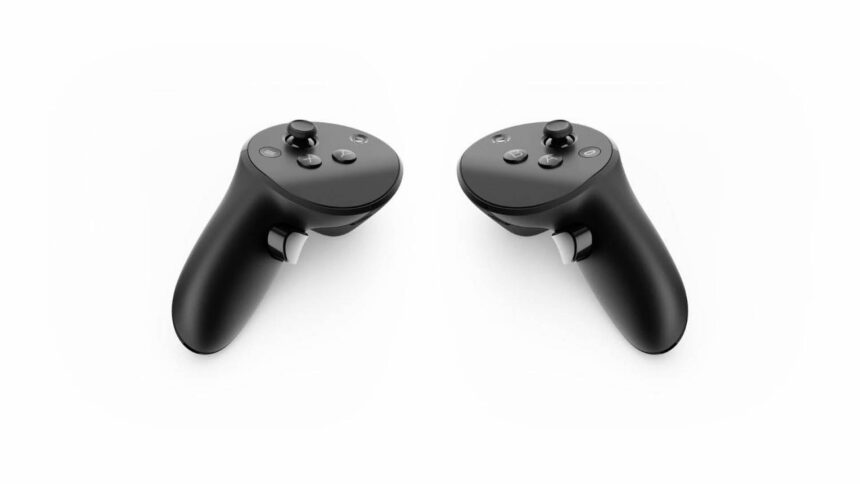
The Meta Quest Touch Pro controllers. | Image: Meta
The Touch Pro controllers have integrated rechargeable batteries and can be charged using the included charging station or a controller charging cable. According to Meta, the input devices last up to eight hours, depending on how intensively you use the controllers and with which VR apps. Twitter statements from John Carmack and Andrew Bosworth suggest a battery life of at least 4 hours.
According to Meta, the Touch Pro controllers are more ergonomic and better balanced than the Touch Controllers of the Meta Quest 2. They also offer improved haptics: Meta's new TruTouch feedback.
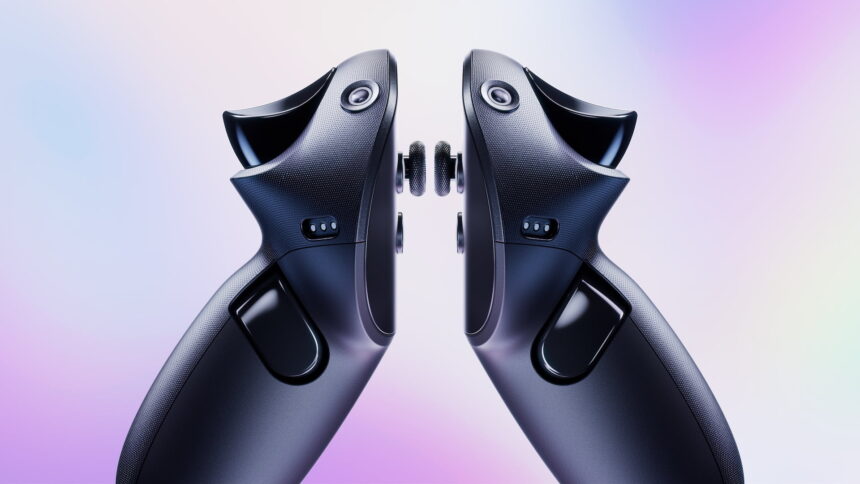
Meta Quest Touch Pro controller with highly visible tracking camera and charging contacts. | Image: Meta
The beveled thumb rest offers a pressure sensor that, in combination with the trigger button, allows a pinch gesture in VR. Stylus-like pen tips can be attached to the tip of the grips for realistic writing and drawing in VR, for example in Horizon Workrooms.
The Meta Quest Touch Pro controllers are compatible with Meta Quest 2 and will go on sale later this year as a separate accessory for $299.
How much does Meta Quest Pro cost?
Meta Quest Pro has been available for pre-order since October 11, 2022 and will be released on October 25, 2022.
The prices are:
- 1,499 US dollars
- 1.499 British pounds
- 1,799 euros
Where is Meta Quest Pro available?
Meta Quest Pro is available in 22 countries:
- Australia
- Austria
- Belgium
- Canada
- Denmark
- Finland
- France
- Iceland
- Ireland
- Italy
- Japan
- Netherlands
- New Zealand
- Norway
- Poland
- South Korea
- Spain
- Sweden
- Switzerland
- Taiwan
- United Kingdom
- USA
What is included on delivery of the Meta Quest Pro?
Meta names the following contents:
- Meta Quest Pro
- 2 Meta Quest Touch Pro controllers
- Charging cradle
- USB-C power adapter
- Charging cable for controller
- Charging cable
- 2 pen tips
- 2 partial light blockers (left and right)
- Cable clamp
- Protective cover
- Cleaning cloth
- 2 wrist straps
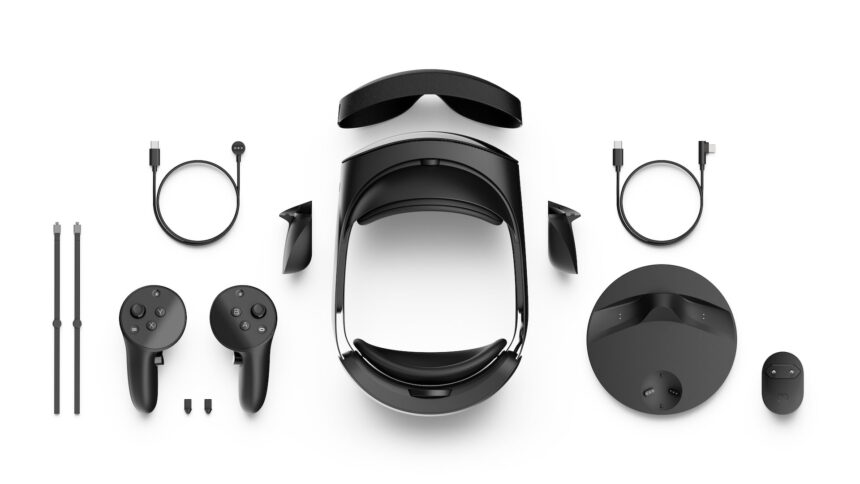
The scope of delivery at a glance. | Image: Meta
What accessories are available for Meta Quest Pro?
- Compact charging station for Meta Quest Pro: In addition to the charging station and USB-C adapter included with the Meta Quest Pro, a more compact mobile charging station is also available for the Meta Quest Pro. The price: $79.99. The start of shipping is October 25, 2022, according to Meta.
- Complete light blocker for Meta Quest Pro: The light blocker is intended for pure VR use and shields the light from all sides. The included partial light blocker leaves the lower part of the viewing periphery free, so it only partially shields against the physical environment and light incidence. The price: $49.99. The start of delivery is November 22, 2022, according to Meta.
- VR earphones for Meta Quest Pro: This audio solution is optimized for the VR experience. The earphones are connected separately on the right and left side of the head mount, preventing cables from interfering. The price: $49.99, or $99.99 for the wireless model. The start of delivery is October 25, 2022, according to Meta.
- Link cable for Meta Quest Pro: For PC-VR use via Meta Quest Link. Price: $79.99. Immediate delivery is available.
- Incase Carrying Case for Meta Quest Pro: Intended for mobile transport, the Incase Carrying Case provides ample space for the headset, controllers, and included charging accessories. The price: $119.95. The start of delivery is October 25, 2022, according to Meta.

The VR earphones, the compact charging station, the complete light blocker and the link cable. | Image: Meta
What do testers have to say about Meta Quest Pro?
There have only been a few limited hands-on demos so far. Real tests will probably not appear until the headset's market launch on October 25, 2022.
Note: Links to online stores in articles can be so-called affiliate links. If you buy through this link, MIXED receives a commission from the provider. For you the price does not change.